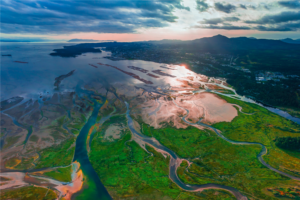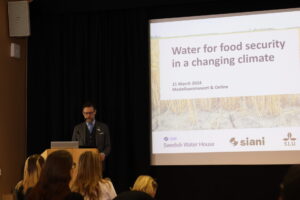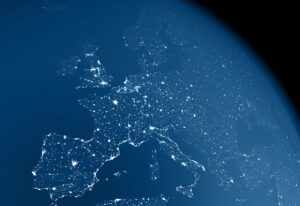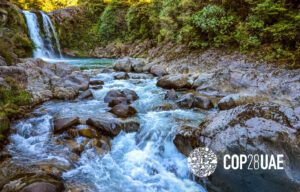- SIWI – Leading expert in water governance
- /
- Latest
- /
- How water can help us tackle climate change – 4 questions to Viktor Sundman
How water can help us tackle climate change – 4 questions to Viktor Sundman
For Viktor Sundman and his colleagues in SIWI’s International Policy team, it has long been a top priority to get more countries to think “water” when they draw up plans for dealing with issues related to climate change. Now they are starting to see results.

Are more countries focusing on water and climate?
Yes, we definitely see a growing interest, but much more needs to be done. Last year’s climate summit, COP25 in Madrid, was called “the Blue COP” and water was more in focus than in previous years. The side events that were organized by SIWI and other water organizations drew large crowds, but, unfortunately, we did not see the same progress in the actual negotiations.
SIWI also gets more and more requests for support from countries that want to work more actively with water solutions as part of their Nationally Determined Contributions to the Paris Agreement on Climate Change.
At the same time, most countries are not yet using water-related solutions to their full potential. There are many misconceptions and knowledge gaps about the relationship between water and climate that must be addressed.
Can you give examples?
Water is still often forgotten in the climate debate, despite the fact that global warming is mostly felt in the form of too much or too little water. Rising temperatures alter the water cycle so that rains do not fall when they are supposed to, and we get more extreme floods and droughts.
So far, climate discussions have primarily focused on reducing the amount of greenhouse gases that are released into the atmosphere, which of course is essential, but it is not enough. Even if we do manage to quickly bend the emissions curve, our planet is set to become a more unpredictable and dangerous place. We need to talk much more about how we can redesign our societies so that they are able to cope with these new threats.
So, what kind of solutions do you want to see?
We need to address the entire cycle and look at integrated solutions. For example, if we improve the management of wastewater and stop dumping 80 per cent of it into rivers and the environment, we can protect our land and marine-based ecosystems. This way wetlands, forests, corals, and algae can produce oxygen and store carbon dioxide.
Interestingly, many of the solutions that make societies more resilient are also great for cutting greenhouse gases. For example, wetlands can reduce the risk of floods while also storing carbon and improving water quality. Another example is how increased water efficiency means that less energy will be needed for wastewater treatment.
With growing water-scarcity, we will definitely need to focus more on this kind of solutions that multi-task. So far, it has been common to mainly associate water solutions with climate adaptation, but they should also be seen as an underutilized tool to reduce emissions.
How can SIWI raise the level of awareness about water and climate?
SIWI is working in many countries as an advisor on climate-smart policies, ranging from water and landscape management to city planning and water diplomacy. We are also a leading actor in the global climate talks and at international conferences to make sure that water is high on the agenda. And we organize frequent seminars and discussions.
On 30 September, we will observe the Hydrological New Year with a webinar together with the Swedish Meteorological and Hydrological Institute, SMHI. If you speak Swedish, you should definitely join us and listen to some of Sweden’s leading climate and water experts!







